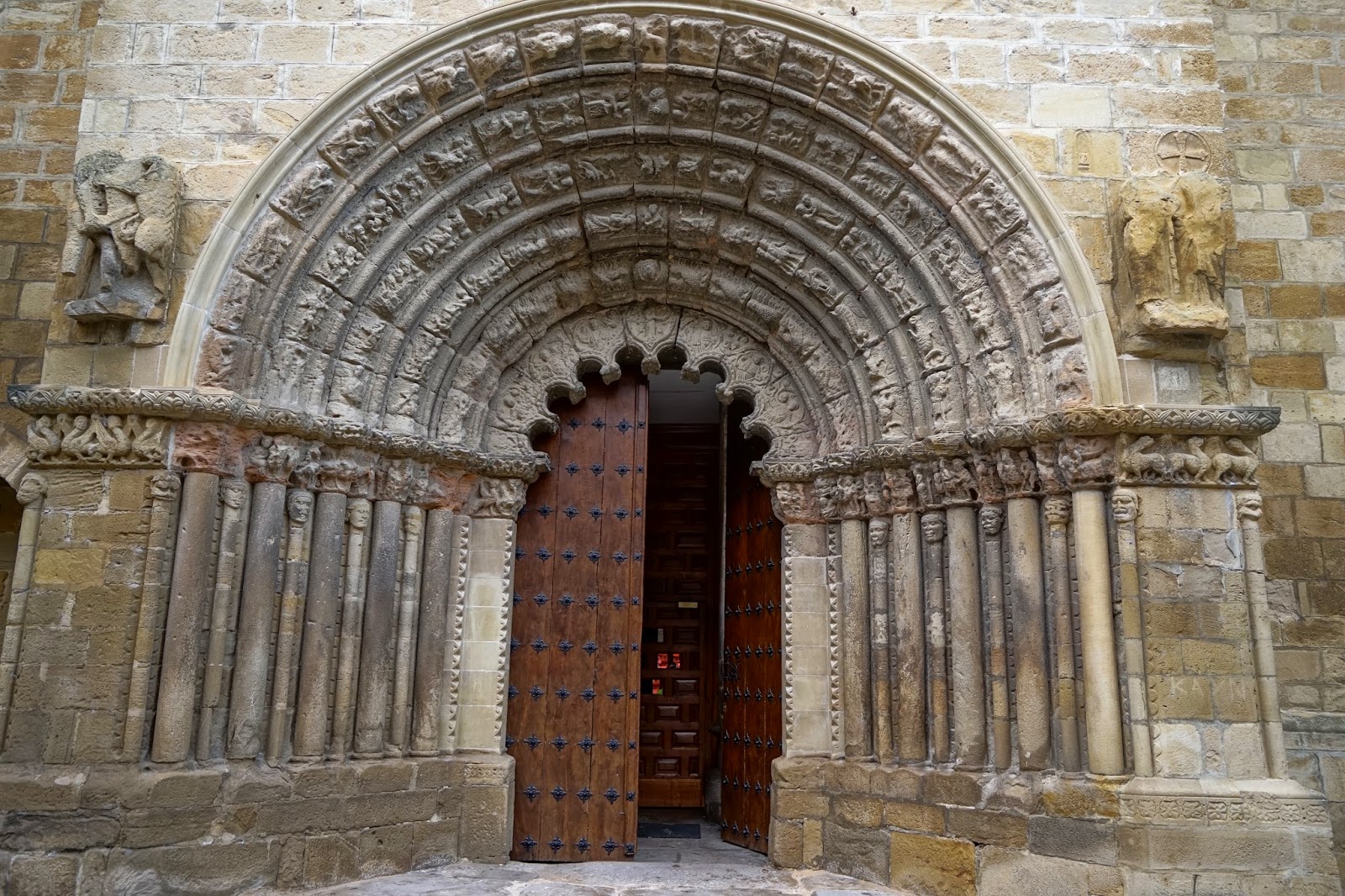 |
| Puente la Reina: Leaving through Calle Mayor. One of the gates used during a bull run on right. |
.JPG) |
| Puente la Reina: medieval pilgrim bridge and its namesake town |
We have all the elements of a beautiful morning - a pleasant weather, interesting and varied scenery, charming towns, and good company, most notably a Korean lady doing the Camino by herself. She is one of those young people taking an extensive time off work to come here, and now has met two other single women from her country, so they are now walking together.
.JPG) |
| White cliffs? Dover? What country am I in? What planet am I on? |
 |
| What a waste. Figs on the pavement, just outside Maneru. |
 |
| Cirauqui: Stunning as it comes into view. Reminiscent of Toledo. |
 |
| Cirauqui: deserves another shot. Vines and olive trees in front. |
 |
| Cirauqui: Surrounding countryside |
 |
| Cirauqui: a house facade |
The scenery and towns in the afternoon are somewhat monotonous but there is still enough interesting stuff, as there always is on the Camino. We stop for a late lunch at an albergue in Lorca and unexpectedly find a Korean proprietor who is married to a local man. Koreans are definitely an increasing presence on the Camino, but this must be a rarity. Chisoon is doing well enough to not share a taxi ride at this point while a French-Canadian lady who's been struggling is thinking about it.
 |
| An old Roman road as we exit Cirauqui |
 |
| A world map seen after Cirauqui looks pretty accurate. No doubt they don't want any pilgrims upset about their countries being left out. |
 |
| A large heap of hay seen after Lorca. |
.JPG) |
| A local man tossing to us ripe figs from his tree. |
.JPG) |
| As we go over the bridge into Villatuerta, I hear Vivaldi. It's a man playing the guitar on the river bank. |
.JPG) |
| Entreing Estella: Impressive façade of 14th Century Church of Holy Sepulchre |
 |
| Estella |
 |
| Stairs to San Martin Church |
 |
| Finally some dinner at Plaza de los Fueros with San Juan Batista Church in the background. |
.JPG)







.JPG)
.JPG)

.JPG)


.JPG)





.JPG)



.JPG)







.JPG)
.JPG)
.JPG)
.JPG)
.JPG)

